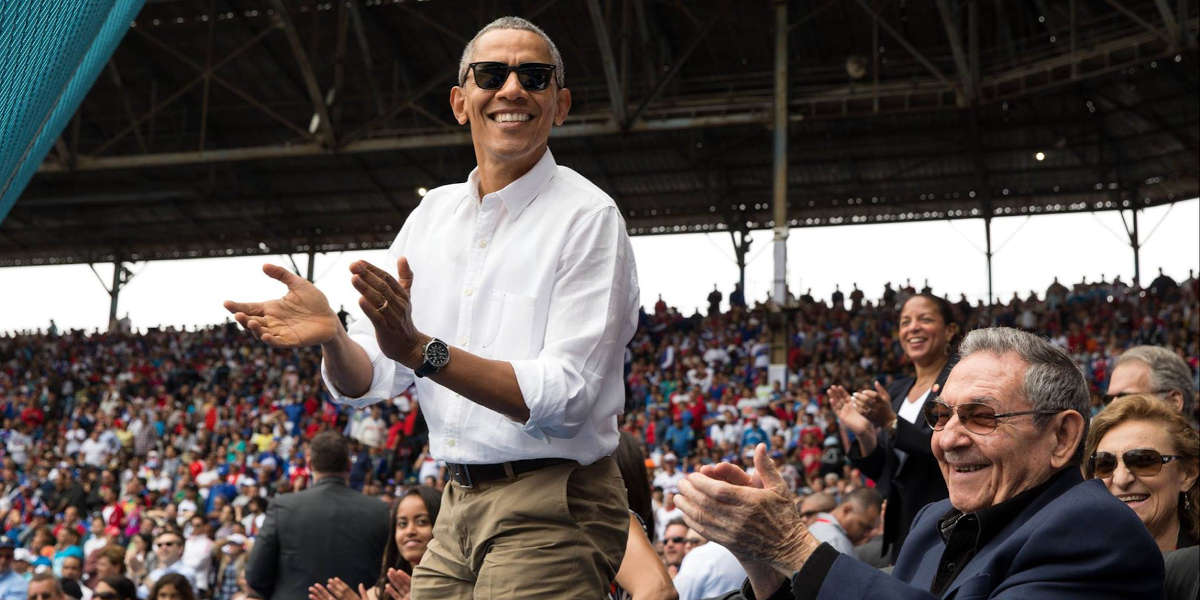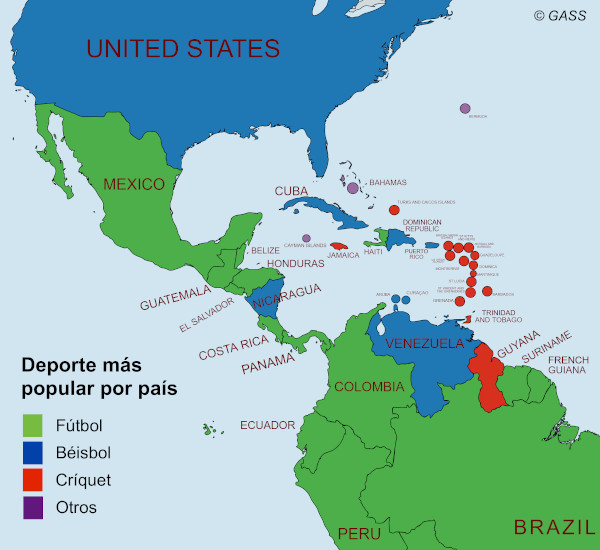In the picture
Barack Obama and Raul Castro attend a friendly baseball game between the Tampa Bay Rays and the Cuban national team Havana, 2016 [White House, Pete Souza].
The Caribbean Sea does not separate North and South America, but is a powerful connector of the countries that occupy the center of the Western Hemisphere, linking the islands with each other and with the mainland. Few realities have proved more effective in that connecting task than sports: baseball, which is played in the United States, Cuba and Venezuela; cricket, which amalgamates the former English colonies; and soccer, which places the Guyanas not in the South American federation, but in the federation that brings together the countries bordering the Greater Caribbean, from the United States to Panama.
The role of the Caribbean as a nexus linking coastal countries with others is especially symbolized in the way soccer federations are organized. Thus, the Confederation of North, Central American and Caribbean Association Football (Concacaf) also includes Guyana, Suriname and French Guiana, thus uniting all the countries of the Greater Caribbean (the perimeter formed by the sea itself and the other adjacent Atlantic areas). The only exceptions are Colombia and Venezuela, also with a Caribbean coast, which are part of the South American Football Confederation (Conmebol). Concacaf also includes Canada and El Salvador, the only Central American country with only a Pacific coastline.
CONCACAF is made up of 41 affiliated teams. The North American members are Canada, the United States and Mexico; the Central American members are Guatemala, Belize, El Salvador, Honduras, Nicaragua, Costa Rica and Panama; and the Caribbean members are Cuba, Jamaica, Haiti, the Dominican Republic, Trinidad and Tobago and the rest of the Lesser Antilles. The participation of territorial entities that are not independent states, such as Puerto Rico or small islands that are dependencies of the Netherlands or the United Kingdom (Aruba, Curaçao, Dominica, Cayman Islands...) constitutes a great opportunity for interaction among the different populations. There are also the former English Guiana (Guyana) and Dutch Guiana (Suriname) and also the French Guiana (department of overseas France), which despite being on the continent have historically had a close link with the Caribbean due to colonization issues and language.
CONCACAF is responsible for organizing national team competitions for men and women, in addition to regional club championships. Among the most important championships are the Gold Cup, which is the most important regional championship among the national teams and is played every two years, and the Nations League, which is the qualifying qualifier for the FIFA World Cup, where the teams with the highest score qualify directly for the World Cup (the fourth team goes to a playoff match with another team from the world). Precisely, North America will host the 2026 World Cup, with matches in Canada, the United States and Mexico; their respective national teams are assured a place, which this time will allow the qualification of more Concacaf members.
The South American Soccer Confederation, or Conmebol, is the organization made up of the 10 federations located in South America: Argentina, Brazil, Bolivia, Chile, Colombia, Ecuador, Paraguay, Peru, Uruguay and Venezuela. It is in charge of organizing the Copa América (regional national team championship), Copa Libertadores and Copa Sudamericana championships. It also organizes the qualifiers for participation in the FIFA World Cup, where all teams play against each other twice and the five teams with the best score qualify directly for the World Cup (the sixth team goes to a playoff match with another team in the world).


